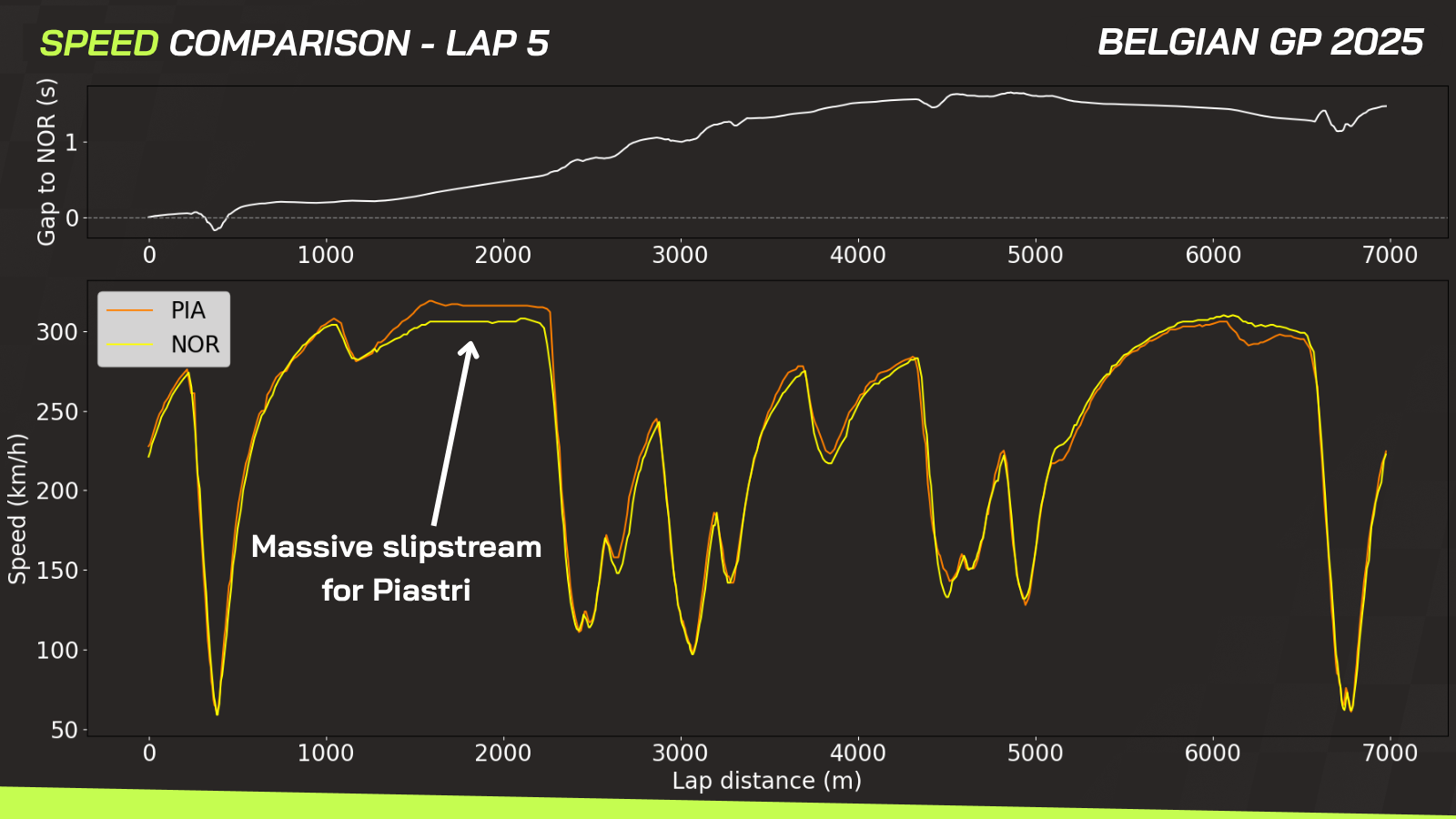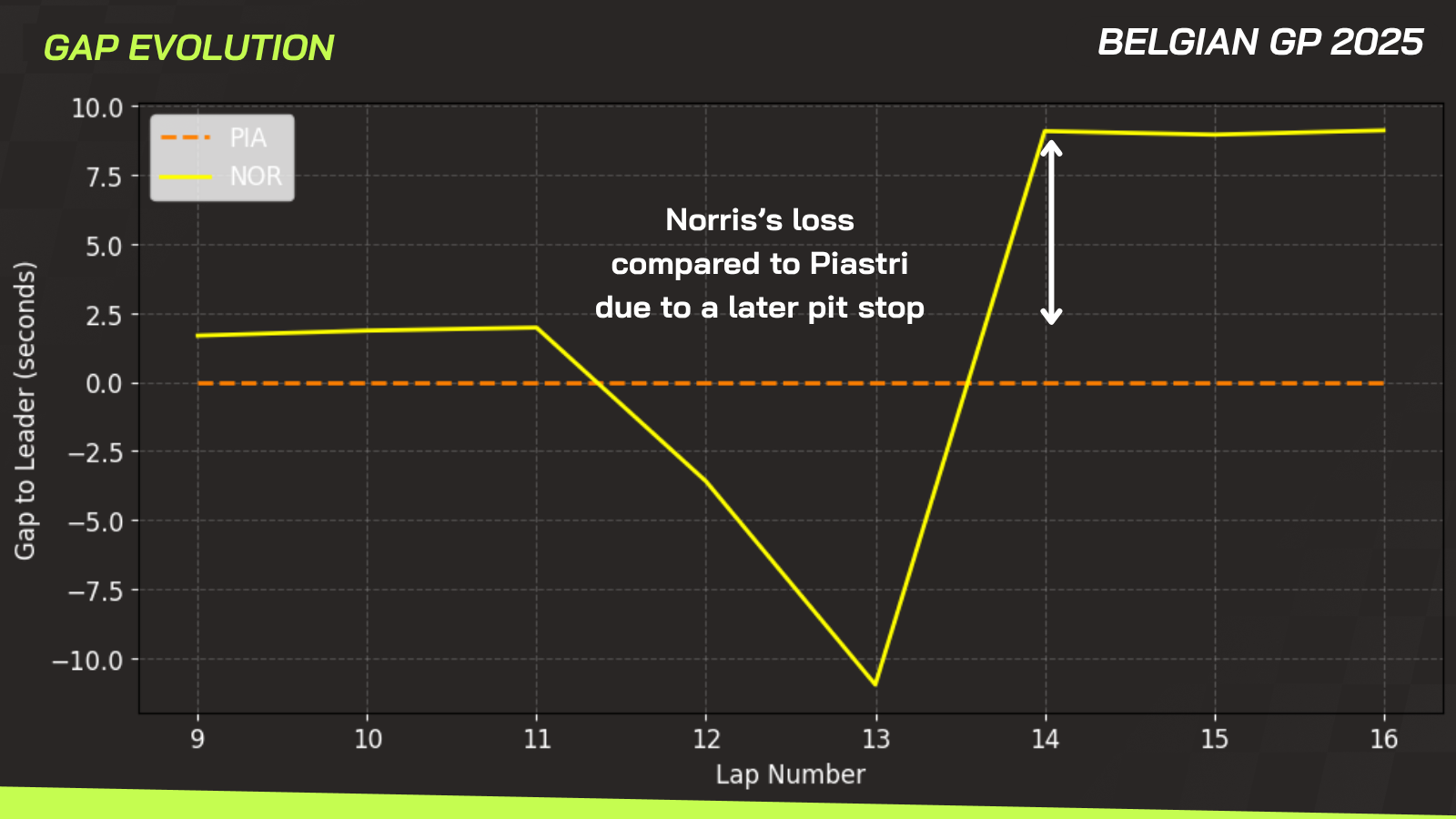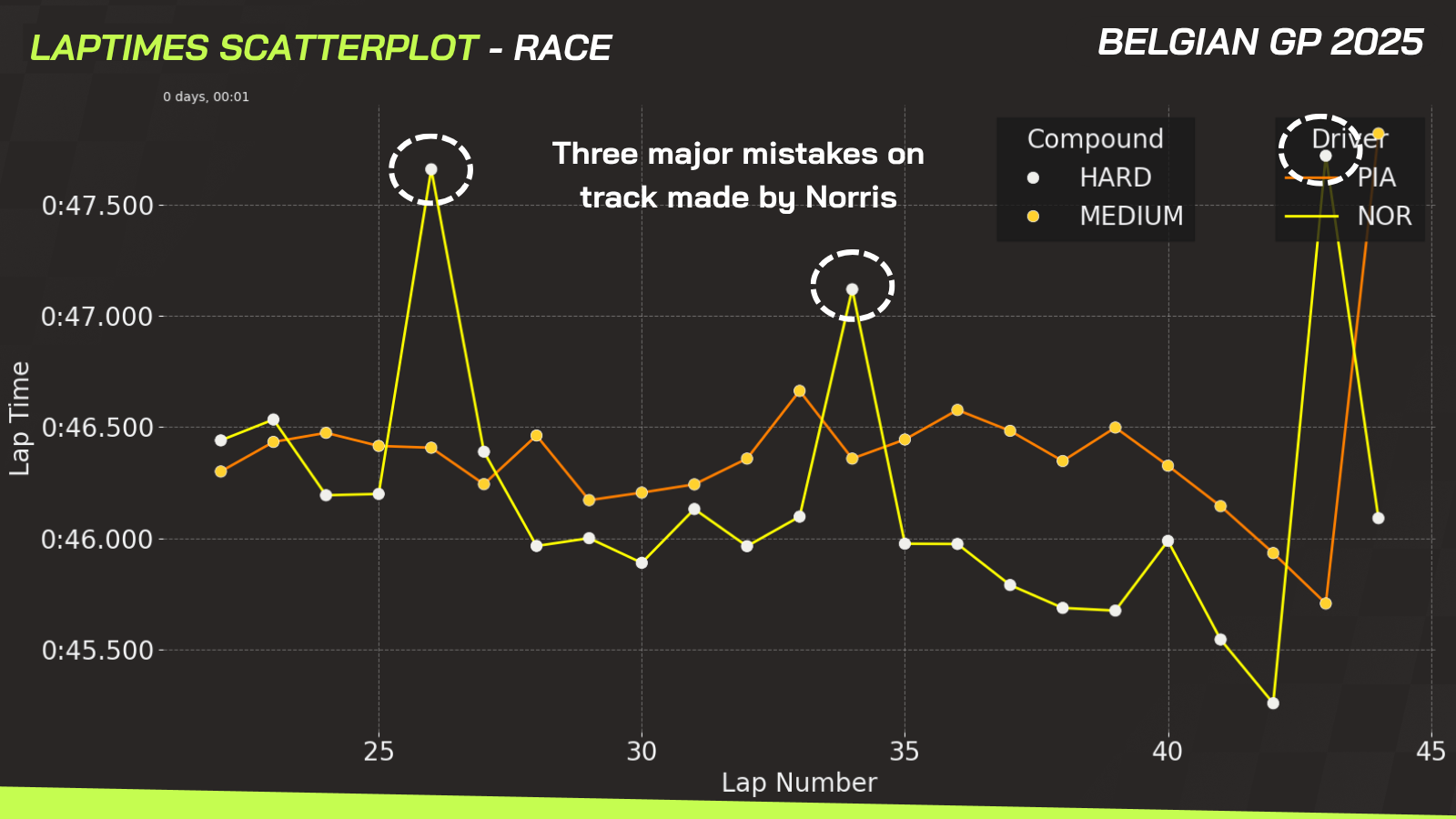Revealed: The mistakes that cost Lando Norris victory in Belgium

Lando Norris made three crucial mistakes during the Belgian GP.
After a delayed race start in Belgium, Oscar Piastri made a bold and decisive move on the opening lap of green flag running — a move that would ultimately seal his victory and further extend his lead in the championship standings.
But could Lando Norris have done anything differently to challenge his team-mate? How much did his mistakes cost him? And was the decision to go with the hard compound tyres the right one? With the help of telemetry data, we break it all down.
Did Lando Norris miss his chance to win?
Lando Norris started Sunday’s Grand Prix from pole position, having delivered a brilliant qualifying lap the day before, where he edged out team-mate Piastri for top spot.
We all know how crucial pole position can be this season, especially on circuits where overtaking is a challenge. And when the race begins with a rolling start — as it did at Spa due to treacherous wet conditions — defending your position becomes even easier.
The Race Director made that safety-first call, much to the disappointment of fans who were hoping for a dramatic standing start. After four laps behind the Safety Car, the green flags finally waved on Lap 5.
It didn’t take long for the action to begin.
Knowing that the race start was likely his best — perhaps only — chance to snatch the lead, Piastri launched a fearless attack. With a great exit from Turn 1 (La Source), he was already in Norris’s diffuser. He stuck with him through Eau Rouge and Raidillon, and by the time they reached the Kemmel Straight, he was side-by-side.
Telemetry shows a noticeable speed advantage for Piastri due to the slipstream effect, reducing drag and allowing him to complete the pass before Les Combes.

It was the perfect response from Piastri after losing out in qualifying, and it set the tone for a controlled race from the front.
What followed was a calm phase of tyre management as the track transitioned from wet to dry. In such conditions, timing your pit stop becomes absolutely critical — too early and you lose grip, too late and you give away time to rivals already on slicks.
At McLaren, the leading driver in the race gets priority in terms of strategy. As race leader, that meant Piastri.
With the track drying rapidly, McLaren called him in on Lap 13 to switch to medium slicks. That was just one lap after the first wave of drivers — including Lewis Hamilton, Pierre Gasly, Fernando Alonso and Nico Hulkenberg — made the same move.
Norris pitted just a lap later, opting for the hard tyres instead of mediums. It’s worth noting: this weekend’s hard compound was Pirelli’s C1, while the mediums were C3s — a significant gap in grip and warm-up time.
Before the stops, the gap between the two McLarens was just under 2 seconds. After the stops, Norris found himself 9 seconds behind, due in part to a slow pit stop caused by a problem on the front-left wheel change, which likely cost him an extra 1 to 1.5 seconds.

More tech analysis from the Belgian Grand Prix:
👉Tech analysis: Red Bull throw kitchen sink at RB21 in bid to catch McLaren
👉Uncovered: McLaren’s subtle change that yielded big performance gains
From that point forward, Norris’s only hope was for his tyre strategy to pay off later in the race, or for Piastri to be forced into a second stop.
Up until lap 24, their pace was fairly similar, with a slight edge to the Australian. But around this point, it appears that Piastri made the call to try and make the tyres last, suggesting he wouldn’t be stopping again.
That kicked off a race-long game of tyre management and pace balancing. Norris was, on average, noticeably faster, but he made several costly errors.
The first came on Lap 26, where he lost rear grip in Sector 2 and had to run wide off the circuit at Pouhon — a mistake that cost him about 1.5 seconds.
The second error came on Lap 34: a lock-up into La Source cost around 0.6 seconds, but besides this, his entire second sector on that lap was poor, resulting in a total lap time deficit of over one second.
After that, Norris picked up his pace and began closing the gap, prompting Piastri to respond with quicker laps of his own.
But the most expensive error came in the penultimate lap: Norris lost 2.5 seconds compared to his previous lap, a major setback at the worst possible time.

So, could he have challenged for the win if not for these mistakes?
Answering the question is actually quite simple — all you need to do is add up the time lost and see how much time he lost.
We can say that his on-track mistakes cost him somewhere between four and five seconds, while the pit stop delay, due to the mechanics’ slow change of the front-left tyre, added approximately another 1 second.
The Briton finished the race 3.4 seconds behind, so the math is clear — Norris definitely could have been in the fight for victory. Of course, we cannot say with certainty whether he would have managed to overtake his team-mate and secure the victory, but he could have offered a far greater threat that he ultimately did.
At the end of the day, it was a well-deserved win for Oscar Piastri, along with an increased gap in the championship standings, which now stands at 16 points. But of course, the season has only just entered its second half, so rest assured, there’s still plenty of excitement and drama ahead of us on track.
Read next: Lando Norris ‘couldn’t have won’ Belgian GP in Oscar Piastri admission





